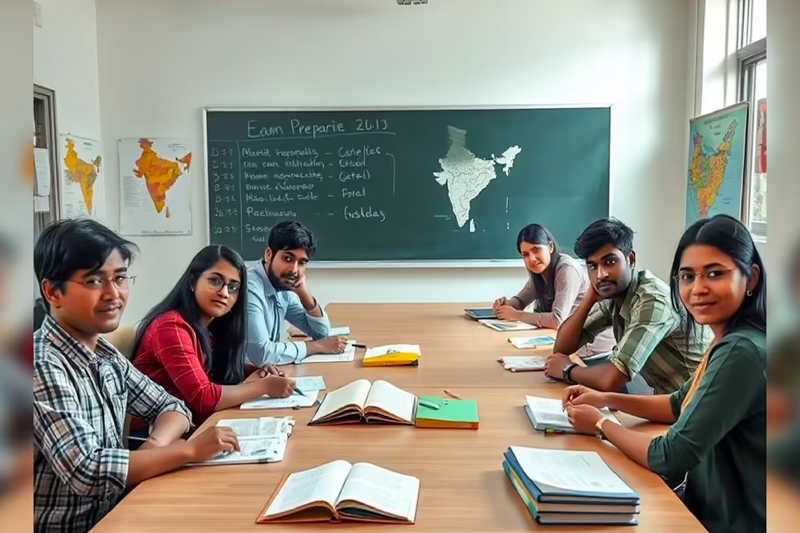
Education Ministry Recommends Common Board for Class 10 and 12 in Seven States After Analysis Reveals Poor Outcomes
In a move aimed at reforming secondary education and reducing dropout rates, the Ministry of Education has advised seven Indian states to adopt a common examination board for Classes 10 and 12. The recommendation follows an internal analysis by the School Education Department, which found these states collectively responsible for 66% of student failures in 2024. The states in question are Andhra Pradesh, Assam, Kerala, Manipur, Odisha, Telangana, and West Bengal.
Why the Push for a Common Board?
According to School Education Secretary Sanjay Kumar, the diversity of educational boards across India has contributed to inconsistencies in academic outcomes. India currently has 66 school examination boards, including 3 national-level boards and 63 state-level ones (comprising 54 regular and 12 open boards). Interestingly, the top 33 boards cater to 97% of students, while the remaining 33 boards serve just 3%, reflecting an uneven distribution and fragmentation.
"Common board for Class 10 and 12 is the way forward for ease of schooling. Not having a common board leads to poor academic outcomes," Kumar said.
The Alarming Statistics
The analysis brought attention to the sheer scale of academic failures:
- 22.17 lakh students failed Class 10 in 2024.
- 20.16 lakh students failed Class 12 the same year.
Although these numbers have shown some improvement over the past decade, they continue to be a major hurdle to higher education and career progression.
Open Boards Underperforming
One of the most glaring observations in the report was the underperformance of open school boards. Only 54% of Class 10 and 57% of Class 12 students from these boards passed their exams. This calls into question the efficacy of alternative learning models in their current form.
To address this, the Ministry stressed the need to expand the role of the National Institute of Open Schooling (NIOS) in the seven recommended states. NIOS, which is currently more prominent in states like Delhi, Rajasthan, and Haryana, could serve as a powerful tool for re-engaging failed students.
Regional Disparities in Performance
The analysis highlighted significant regional disparities. For instance:
- Students taking exams in Odia and Malayalam mediums performed significantly better than those in Kannada, Telugu, or Assamese.
- States like Kerala, Odisha, and Manipur, which have more integrated board systems, recorded pass rates above 97%, with Kerala peaking at 99.96%.
This indicates that curriculum standardisation, assessment consistency, and streamlined exam formats could play a crucial role in bridging educational divides.
Girls Outperforming Boys in Science
Another emerging trend is the growing academic performance of female students, especially in science:
- Over 28 lakh girls passed in science in 2024.
- This surpasses the 27.2 lakh in arts, marking a reversal from earlier years and a significant leap from 23.3 lakh in 2022.
This shift reflects not only changing societal dynamics but also the growing interest of girls in STEM fields.
Need for Standardised Assessment
The ministry report emphasized the urgent requirement for:
- Standardised assessment processes
- Uniform curriculum and paper setting
- Clear elevation criteria to the next class
- Defined exam spans and frequency
These reforms are seen as critical for ensuring equity across states and reducing performance gaps that arise due to board disparities.
Strengthening Institutions like NIOS, NVs, and KVs
Officials called for greater collaboration among central initiatives such as:
- NIOS to re-integrate dropouts
- Samagra Shiksha Abhiyan to provide funding and support
- Parental engagement to ensure continued learning
Moreover, the report applauded the performance of Navodaya Vidyalayas (NVs) and Kendriya Vidyalayas (KVs):
- 72% of NV students cleared NEET-UG
- These institutions also performed well in engineering entrance examinations
Such success stories highlight the potential of residential, co-educational, and centrally administered schools in offering quality education to rural and semi-urban populations.
Conclusion
The Ministry of Education's recommendation to adopt a common board for Classes 10 and 12 in select states is a bold and necessary step toward educational equity and quality. With millions of students still struggling to pass board examinations, standardisation, institutional support, and systemic reform are the need of the hour. By aligning assessments and strengthening open and central institutions, India can offer a more level playing field for every student, regardless of their geography or medium of instruction.
This development is not just a policy change—it’s a call to action for stakeholders at every level of the education ecosystem to come together and reimagine India’s school board framework for a more inclusive and efficient future.



